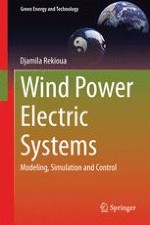2014 | Buch
Über dieses Buch
The book helps readers understand key concepts in standalone and grid connected wind energy systems and features analysis into the modeling and optimization of commonly used configurations through the implementation of different control strategies.
Utilizing several electrical machinery control approaches, such as vector control and direct torque control 'Wind Power Electric Systems' equips readers with the means to understand, assess and develop their own wind energy systems and to evaluate the performance of such systems.
Mathematical models are provided for each system and a corresponding MATLAB/SIMULINK example is included at the end of each section in order to demonstrate key processes and methods.
Anzeige
